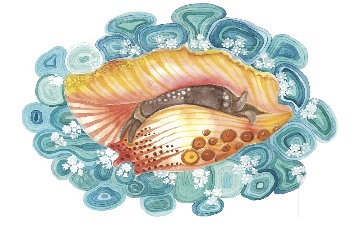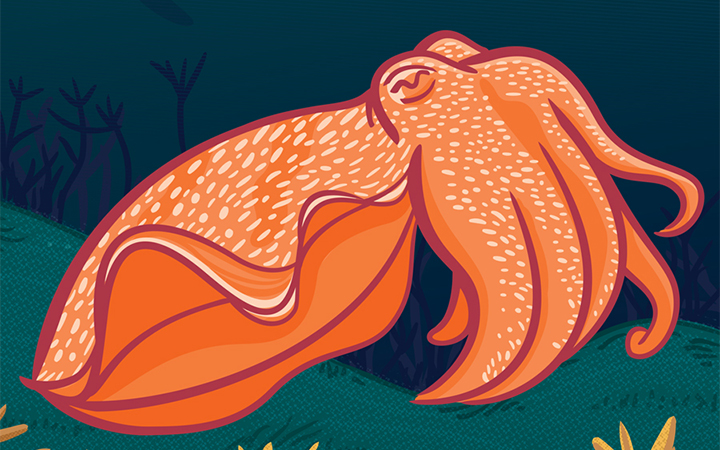Mollusca

Caracol Pala
Lobatus gigas


6 POINTS
El Movimiento: 2
Dato: También conocida como Concha reina, esta especie de caracol se encuentra en todo el mar Caribe.

Pacific Littleneck Clam
Leukoma staminea


3 POINTS
PLAY: LittleNeck Clam has a MOVE of 1. This clam is a filter feeder, and can be considered prey for carnivores.
FACT: The Pacific Littleneck Clam’s concentric rings can be used to determine their age.

Variable Neon Slug
Nembrotha kubaryana



10 POINTS
Play: This slug has a MOVE of 1 and can only feed off of SPECIES cards with class ASCIDIACEA.
Fact: This slug can store, in its tissues, the toxins from the ascidians it eats and then can release them in a slimy defensive mucus when alarmed.

Giant Cuttlefish
Sepia apama



8 POINTS
Play: The Giant Cuttlefish has a MOVE of 2.
Fact: Using cells known as chromatophores, the cuttlefish can put on spectacular displays, changing color in an instant.

Octopus
Octopus genus



9 POINTS
Play: An octopus has a MOVE of 2.
Fact: Darwin collected many samples along the coast of the Cape Verde Islands, and commented: “I took several specimens of an Octopus, which possessed a most marvellous power of changing its colours; equalling any chamaelion.”

Common Octopus
Octopus vulgaris


8 POINTS
Play: The Common Octopus has a MOVE of 2.
Fact: The Common Octopus is able to colour blend with its surroundings.